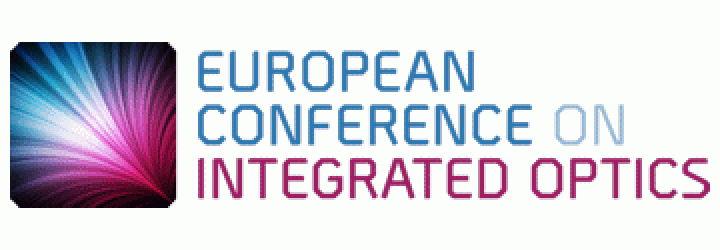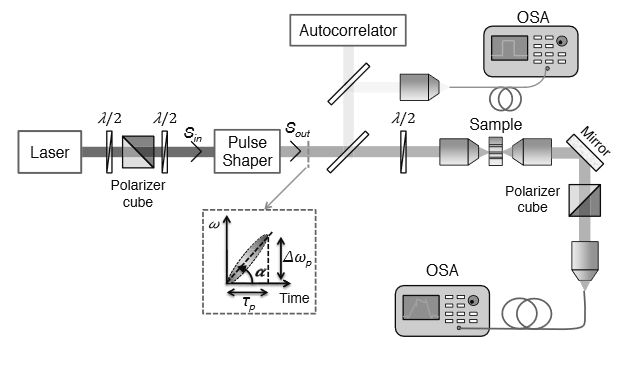Camille Bres – (Invited) Supercontinuum generation in SiN
Monolithic piezoelectric control of soliton microcombs(Student Paper)
Junqiu Liu1, Hao Tian2, Erwan Lucas1, Arslan S. Raja1, Grigory Lihachev1,Rui Ning Wang1, Jijun He1, Tianyi Liu1, Miles H. Anderson1, Wenle Weng1,Sunil A. Bhave2, and Tobias J. Kippenberg11Institute of Physics, Swiss Federal Institute of Technology Lausanne (EPFL), CH-1015 Lausanne, Switzerland2OxideMEMS Lab, Purdue University, 47907 West Lafayette, IN, USAe-mail: junqiu.liu@epfl.ch
ABSTRACT
High-speed laser frequency actuation is critical in all applications employing single frequency lasers orfrequency combs, and is prerequisite for phase locking, laser stabilization and stability transfer among mul-tiple optical carriers. Here, we demonstrate such capability for initiation, tuning and stabilization of solitonmicrocombs, by monolithically integrating piezoelectric AlN actuators on ultralow-loss Si3N4photonic circuits.The integrated AlN actuators feature bi-directional tuning with high linearity, operate with only 300 nWpower and exhibit flat actuation response up to megahertz frequencies, significantly exceeding bulk piezotuning bandwidth. This capability can be used to demonstrate soliton-based source for parallel continuous-wave frequency-modulated LiDAR, via synchronously tuning laser and microresonator. Our approach endowssoliton microcombs with integrated, ultralow-power-consumption, and fast actuation, significantly expandingthe repertoire of technological applications.
Microresonator Soliton based parallel FMCW LiDAR
Anton Lukashchuk1, Johann Riemensberger1, Maxim Karpov1, Erwan Lucas1, Wenle Weng1,Junqiu Liu1, Tobias Kippenberg11Institute of Physics (IPHYS), Swiss Federal Institute of Technology in Lausanne (EPFL), CH-1015 Lausanne, Switzerlande-mail: tobias.kippenberg@epfl.ch
ABSTRACT
We demonstrate an architecture for massively parallel frequency-modulated continuous wave (FMCW) laserranging (LiDAR) by transferring linear chirps of a single narrow linewidth laser onto all soliton comb teeththough generation of a dissipative Kerr soliton in an integrated Si3N4microresonator. Furthermore, we introducea novel approach using dual soliton microcombs. We show a parallel distance measurement with 24 channelsrequiring only a single FMCW pump laser and coherent receiver for read-out
A hybrid chalcogenide-on-silicon platform for non linear photonics
Samuel Serna1,2,3, Hongtao Lin3, Carlos Alonso-Ramos2, Xavier Le Roux2, Kathleen A. Richardson4, Eric Cassan2, Nicolas Dubreuil5,6, Juejun Hu3, and Laurent Vivien21Department of Physics, Bridgewater State University, Bridgewater, Massachusetts 02325, USA2Université Paris-Saclay, CNRS, Centre de Nanosciences et de Nanotechnologies, 91120, Palaiseau, France3Department of Materials Science and Engineering, Massachusetts Institute of Technology, Cambridge, Massachusetts 02139, USA4College of Optics and Photonics-CREOL, University of Central Florida, Orlando, Florida 32816, USA5Laboratoire Charles Fabry, Institut d’Optique Graduate School, CNRS, Université Paris Saclay, 2 Avenue Augustin Fresnel, 91127 Palaiseau cedex, France66LP2N, Institut d’Optique Graduate School, CNRS, Univ. Bordeaux, 33400 Talence, Francee-mail: ssernaotalvaro@bridgew.edu;safes@mit.edu
ABSTRACT
We demonstratea highly nonlinear hybrid waveguide platform based on infiltration of As2S3chalcogenide glass into silicon slot waveguides. The non linear properties of the hybrid waveguides have beenprecisely quantified via a bidirectional top-hat D-scan method, enabling a direct comparison between properties measured using different device geometries. We experimentally reporthybrid As2S3-Si slot waveguides with a two-photon absorption (TPA) figure of merit exceeding 2 at near infrared wavelengths. These waveguides allow for nonlinear phase shifts greater than π with minimal overall losses. These results pave the way for efficient and robust ultrafast all-optical devices and circuits in large-scale silicon photonics technology.
Session 3 Integrated non linear photonics took place on June 23, 2020.
For more information about photonics applications, click here.


